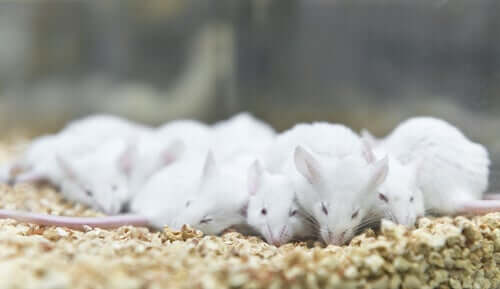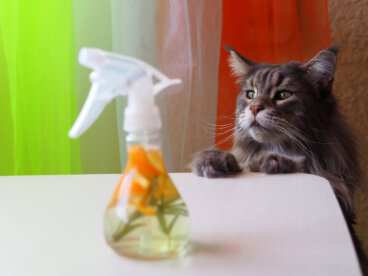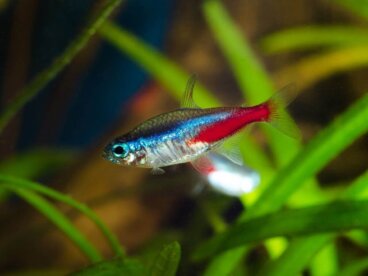Updates Around Laboratory Rat Care


Written and verified by the biologist Ana Díaz Maqueda
Rodents (rats in this case) are the first link to study the effects of new drugs or medical techniques. Their use as a laboratory animal dates back to the 16th century. Since then, rats have been used for neurological studies, determining a product’s toxicity, or the lethality of a chemical substance. This is why rat care is an important factor.
In order for the results to be meaningful and scientifically valuable, it’s essential to ensure the animal’s welfare. Thus, laboratory rat care involves not only the animal’s hygiene and diet, but also everything related to their ethology. This means the entire behavioral repertoire they would have in a natural environment.
Animal research is an extremely controversial topic due to the ethical and moral implications of the use of animals for human benefit. In addition, the lives of these beings are ended in almost every case, either by the experimentation itself or by euthanasia. Therefore, experimentation with animal subjects is strictly regulated, both before and during the experiment.
Although the rat’s behavior in captivity continues to be studied, some questions remain to be answered. For instance, how to improve the animal’s well-being or how to refine techniques to inflict less pain or distress for the rat. In these aspects, the laws are still not updated.
In the absence of global regulations, each country is evolving at its own pace and, in a few cases, there has been some change in the past decade.
The rat as an animal model
The laboratory rat, used for experimental purposes, has been bred for thousands of generations under controlled conditions. Therefore, today there are rat breeds that are used for specific disease research. Alternatively, others are used to analyze the effects of certain chemicals, additives or preservatives for food, herbicides, poisons and many other products. These, by current legislation, must be tested on animals to ensure their safety for human consumption.
The fast generational pace, the rather easy breeding of the rat and its similarity to human physiology make this animal a good model for study. However, we can’t forget that they are sentient beings and that they require conditions and an environment that keeps them healthy, both physically and psychologically.
Laboratory rat care
For lab rat care, the type of accommodation, the rat’s age, and its weight should be taken into account. As a result, depending on all these factors, animals are stocked in one way or another according to the current law or legislation.
Rats with a body weight of between 200 (8 oz) and 600 grams (24 oz) must live in a cage with an area of more than 140 square inches. However, if the rats weigh more than 600 grams (24 oz), the cage must be greater than 350 square inches.

Other factors to consider are sound and vibration, room temperature, and ventilation. Rats are animals with a keen sense of hearing. Thus, they’re capable of perceiving ultrasound frequencies, something that the human ear can’t do. It’s essential, therefore, to remove any electronic devices that produce them.
Some of the sounds that rats produce are at a frequency above 20 kHz (ultrasound). Thus, for this reason, they can become greatly stressed if the sound isn’t being emitted by their companion rats.
With regard to room temperature, the optimum range is between 65 and 75 °F. If the temperature varies around 2 degrees above or below, the rat’s vital functions such as reproduction may be reduced. In addition, if the temperature drops or rises too much, fetal damage may occur.
However, on the other hand, the room where the stalled rats are located should have enough ventilation and air circulation. If the room has recirculated air ventilation, impurities and bacteria may wreak havoc on the rat’s health and well-being.
Lighting the environment
Finally, you should also control the light-dark cycle, which is usually 12-12, i.e. 12 hours with light and 12 hours in darkness. If the ongoing study falls within the range of the darkness period, technicians should work under red light (which is invisible to rats) and not disturb them. Unfortunately, some scientists don’t usually take this factor into account and it isn’t mandatory by law to do so, either.
Lab rat nutrition

The nutritional requirements of some laboratory animals are widely available in documents. However, on the other hand, there is a lack of knowledge about certain primates and other experimental animals’ dietary needs. This isn’t the case for rats, as we do know what their needs are for protein, fats, carbohydrates, vitamins, mineral salts and fiber.
Currently, there are lots of fully-balanced feed formulas for rats and laboratory mice on the market. This kind of rat food offers the rodent all the nutrients it needs. In addition, because of its hardness, it can wear down their teeth. Thus, this is essential to their diet as sharpening their teeth is something fundamental for their health.
However, being so easy to provide them with this, we forget that rats need to forage (to search for their food). Foraging is a totally natural and healthy rodent behavior that also prevents boredom.
The possibility of foraging should be part of the mandatory environmental enrichment available to lab rats.
The role of environmental enrichment for lab rats
Environmental enrichment comprises a set of objects, materials and also food, which simulate the natural environment of the rat. In this way, we prevent boredom in the animals, encouraging them to unfold all their natural behaviors.
The consequences of a low-enriched environment can be dire. From the appearance of stereotyping or repetitive behaviors to pathologic behaviors, where the animals self-mutilate.
For rat care, the most important type of environmental enrichment is the social enrichment. These animals need the constant company of their species who, under laboratory conditions, are individuals of the same sex. Occasionally, a study may involve the individualization of the animals. However, scientists only apply this in short-term investigations and, if carried out in one that lasts longer, it must be strictly justified.

Finally, rats should always have access to the materials needed to create their resting nests and some nibbling objects. Ideally, you should provide other toys, however, these aren’t mandatory.
Without a doubt, this isn’t the best way to keep animals, let alone using them for such purposes. Researchers should work towards a common goal: to end the use of research animals and find alternative ways to perform studies and experimentation.
Rodents (rats in this case) are the first link to study the effects of new drugs or medical techniques. Their use as a laboratory animal dates back to the 16th century. Since then, rats have been used for neurological studies, determining a product’s toxicity, or the lethality of a chemical substance. This is why rat care is an important factor.
In order for the results to be meaningful and scientifically valuable, it’s essential to ensure the animal’s welfare. Thus, laboratory rat care involves not only the animal’s hygiene and diet, but also everything related to their ethology. This means the entire behavioral repertoire they would have in a natural environment.
Animal research is an extremely controversial topic due to the ethical and moral implications of the use of animals for human benefit. In addition, the lives of these beings are ended in almost every case, either by the experimentation itself or by euthanasia. Therefore, experimentation with animal subjects is strictly regulated, both before and during the experiment.
Although the rat’s behavior in captivity continues to be studied, some questions remain to be answered. For instance, how to improve the animal’s well-being or how to refine techniques to inflict less pain or distress for the rat. In these aspects, the laws are still not updated.
In the absence of global regulations, each country is evolving at its own pace and, in a few cases, there has been some change in the past decade.
The rat as an animal model
The laboratory rat, used for experimental purposes, has been bred for thousands of generations under controlled conditions. Therefore, today there are rat breeds that are used for specific disease research. Alternatively, others are used to analyze the effects of certain chemicals, additives or preservatives for food, herbicides, poisons and many other products. These, by current legislation, must be tested on animals to ensure their safety for human consumption.
The fast generational pace, the rather easy breeding of the rat and its similarity to human physiology make this animal a good model for study. However, we can’t forget that they are sentient beings and that they require conditions and an environment that keeps them healthy, both physically and psychologically.
Laboratory rat care
For lab rat care, the type of accommodation, the rat’s age, and its weight should be taken into account. As a result, depending on all these factors, animals are stocked in one way or another according to the current law or legislation.
Rats with a body weight of between 200 (8 oz) and 600 grams (24 oz) must live in a cage with an area of more than 140 square inches. However, if the rats weigh more than 600 grams (24 oz), the cage must be greater than 350 square inches.

Other factors to consider are sound and vibration, room temperature, and ventilation. Rats are animals with a keen sense of hearing. Thus, they’re capable of perceiving ultrasound frequencies, something that the human ear can’t do. It’s essential, therefore, to remove any electronic devices that produce them.
Some of the sounds that rats produce are at a frequency above 20 kHz (ultrasound). Thus, for this reason, they can become greatly stressed if the sound isn’t being emitted by their companion rats.
With regard to room temperature, the optimum range is between 65 and 75 °F. If the temperature varies around 2 degrees above or below, the rat’s vital functions such as reproduction may be reduced. In addition, if the temperature drops or rises too much, fetal damage may occur.
However, on the other hand, the room where the stalled rats are located should have enough ventilation and air circulation. If the room has recirculated air ventilation, impurities and bacteria may wreak havoc on the rat’s health and well-being.
Lighting the environment
Finally, you should also control the light-dark cycle, which is usually 12-12, i.e. 12 hours with light and 12 hours in darkness. If the ongoing study falls within the range of the darkness period, technicians should work under red light (which is invisible to rats) and not disturb them. Unfortunately, some scientists don’t usually take this factor into account and it isn’t mandatory by law to do so, either.
Lab rat nutrition

The nutritional requirements of some laboratory animals are widely available in documents. However, on the other hand, there is a lack of knowledge about certain primates and other experimental animals’ dietary needs. This isn’t the case for rats, as we do know what their needs are for protein, fats, carbohydrates, vitamins, mineral salts and fiber.
Currently, there are lots of fully-balanced feed formulas for rats and laboratory mice on the market. This kind of rat food offers the rodent all the nutrients it needs. In addition, because of its hardness, it can wear down their teeth. Thus, this is essential to their diet as sharpening their teeth is something fundamental for their health.
However, being so easy to provide them with this, we forget that rats need to forage (to search for their food). Foraging is a totally natural and healthy rodent behavior that also prevents boredom.
The possibility of foraging should be part of the mandatory environmental enrichment available to lab rats.
The role of environmental enrichment for lab rats
Environmental enrichment comprises a set of objects, materials and also food, which simulate the natural environment of the rat. In this way, we prevent boredom in the animals, encouraging them to unfold all their natural behaviors.
The consequences of a low-enriched environment can be dire. From the appearance of stereotyping or repetitive behaviors to pathologic behaviors, where the animals self-mutilate.
For rat care, the most important type of environmental enrichment is the social enrichment. These animals need the constant company of their species who, under laboratory conditions, are individuals of the same sex. Occasionally, a study may involve the individualization of the animals. However, scientists only apply this in short-term investigations and, if carried out in one that lasts longer, it must be strictly justified.

Finally, rats should always have access to the materials needed to create their resting nests and some nibbling objects. Ideally, you should provide other toys, however, these aren’t mandatory.
Without a doubt, this isn’t the best way to keep animals, let alone using them for such purposes. Researchers should work towards a common goal: to end the use of research animals and find alternative ways to perform studies and experimentation.
All cited sources were thoroughly reviewed by our team to ensure their quality, reliability, currency, and validity. The bibliography of this article was considered reliable and of academic or scientific accuracy.
- Benjamin, B. (2019). Overview of laboratory animal lifestyle, care, and management: a case study of albino rats. Journal of Applied Sciences and Environmental Management, 23(8), 1431-1435.
- Couto, M., & Cates, C. (2019). Laboratory guidelines for animal care. In Vertebrate Embryogenesis (pp. 407-430). Humana Press, New York, NY.
- Hurst, J. L., Barnard, C. J., Nevison, C. M., & West, C. D. (1997). Housing and welfare in laboratory rats: welfare implications of isolation and social contact among caged males. Animal Welfare, 6(4), 329-347.
- Ley 32/2007, de 7 de noviembre, para el cuidado de animales, en su explotación, transporte, experimentación y sacrificio (BOE 8-11-2008).
- Real Decreto 53/2013, de 1 de febrero, por el que se establecen las normas básicas aplicables para la protección de los animales utilizados en experimentación y otros fines científicos, incluyendo la docencia (BOE 8-2-2013).
- Whishaw, I. Q., & Kolb, B. (2020). Analysis of behavior in laboratory rats. In The Laboratory Rat (pp. 215-242). Academic Press.
This text is provided for informational purposes only and does not replace consultation with a professional. If in doubt, consult your specialist.








